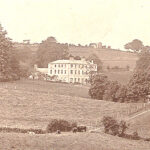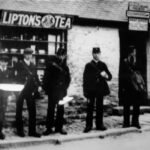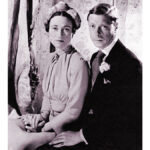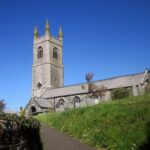Whiteford House
Since the 13th century, there had been a dwelling on the site, but the estate was sold to John Call in 1763. His son, also named John, became High Sheriff of Cornwall in 1771, and built Whiteford House in 1775 after returning from working in the East India Company. It was described as having “a handsome front” and as well as being lavishly designed. The garden folly has survived as Whiteford Temple and is now rented by the Landmark Trust to holidaymakers.
Little of the house survives. Parts are incorporated into home farm (Duchy College). It was sold to the Prince of Wales in 1879 and converted into an office for the Duchy of Cornwall, who sold off all its contents and furnishings for a pittance.
The main house was demolished in 1913 and some of the stone was used to build the nearby Duchy College. The stables and a garden folly (Whiteford Temple). Whiteford Temple is now owned by the Landmark Trust and let as a holiday cottage.
The Post Office
Stoke Climsland Post Office is reported to be Britains oldest continually running Post Office. On January 26th 1839, Lord Lichfield, Postmaster General directed the surveyor to select “a proper person for this small office” One Mr Crafter was selected.
The Post Office was opened originally to accommodate the increased postal traffic generated by several mines that were opening up the mineral wealth of the parish. No doubt the proximity of the Call family at Whiteford had some influence in this decision. Being on the main Turnpike between Plymouth and Launceston, it presented the ideal spot for a viable “Penny Post Office”.
Today, it’s run by David and Sue Watts and continues to thrive under their stewardship. Have you found something you can’t find in the shop? I haven’t!
Pendragon House
The former rectory, care home and mansion is controversially where Edward VIII fell for Wallis Simpson. Edward was Prince of Wales when he met the married American at Pendragon House.
It was owned by Royal Chaplain Canon Martin Andrews, who said later: “After they had gone, I was convinced that our popular prince was deeply in love.” Edward later abdicated the throne over the affair in 1936, leading to his brother George VI to take up the mantle.
Stoke Climsland Parish Church
The church was originally founded by King John in c.1215 and was dedicated in 1321, although it’s unclear as to the identity of the saint as this has since been lost. There’s very little of the original building left, and the majority is made up by 15th century later building work.
The Church has a nave of six bays, north and south aisles, a south porch and an embattled western tower of granite, and inside medieval wagon roofs which boast a beautiful selection of medieval roof bosses, including at least one Green Man, a witches mark and the head of Eleanor of Aquitaine. The church was restored in 1860 and most of the windows date from this time.
The Church Clock, which still keeps good time, was designed and installed by Josiah Wadge of Callington in 1767. The bells were orignally cast and installed by the John Pennington & Co, Bellcasters of Lezant and Stoke Climsland in 1771 and were recast in 1953 by Taylor of Loughborough, at which time an eighth bell was added to the peel.
Venterdon Methodist Chapel
Luckett Chapel
Monks Cross Chapel
Downgate Chapel
Hampt Chapel




